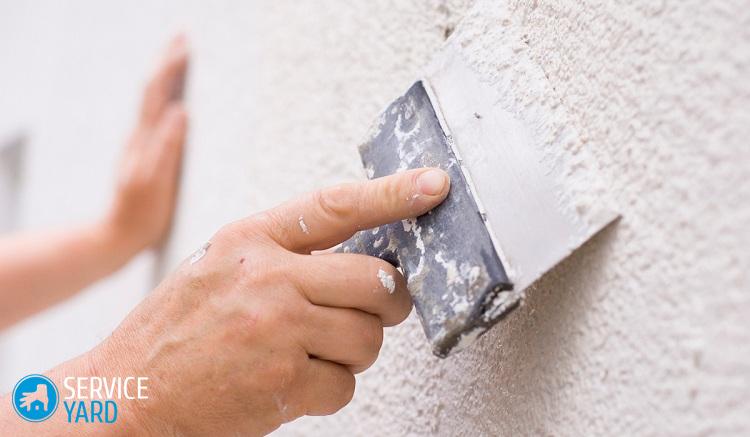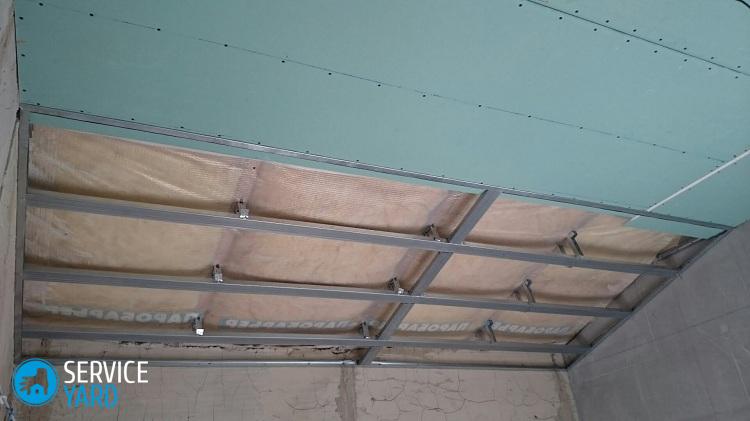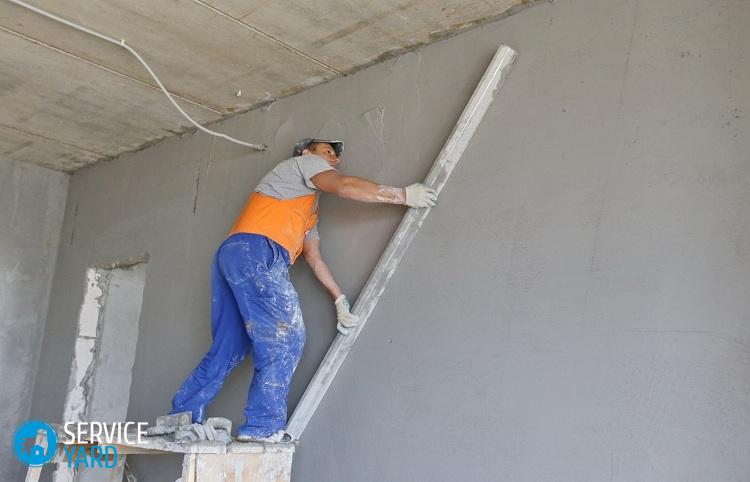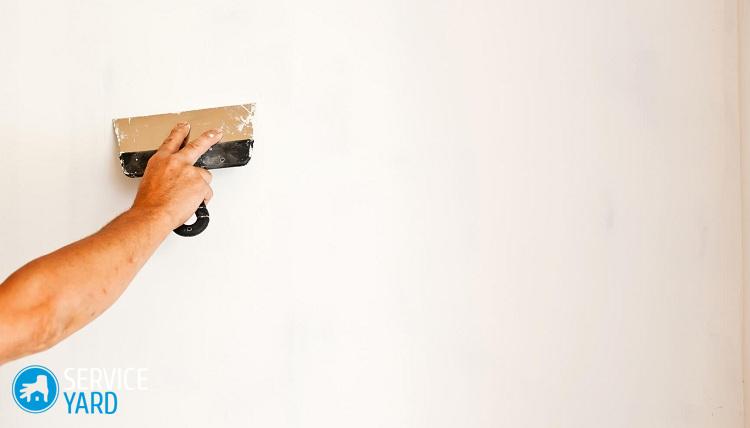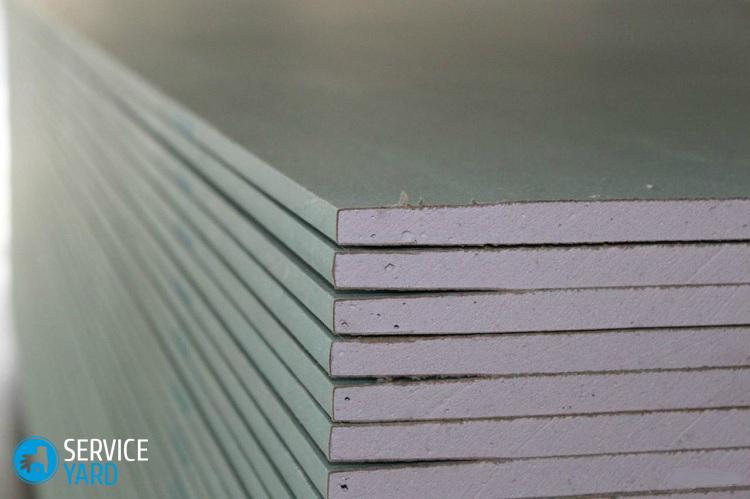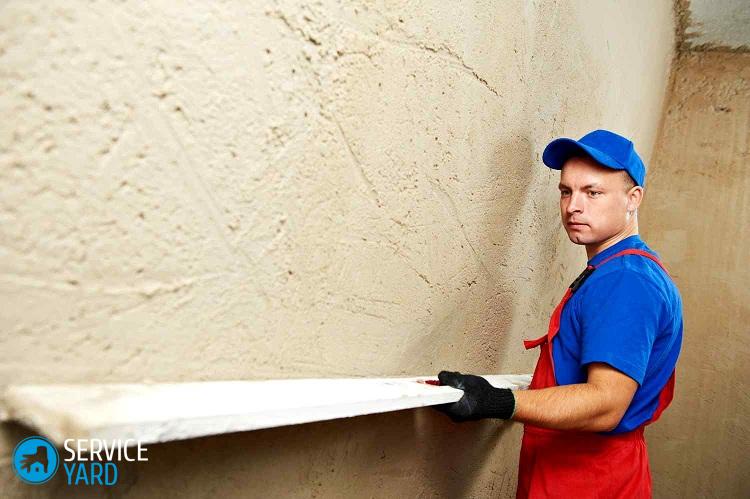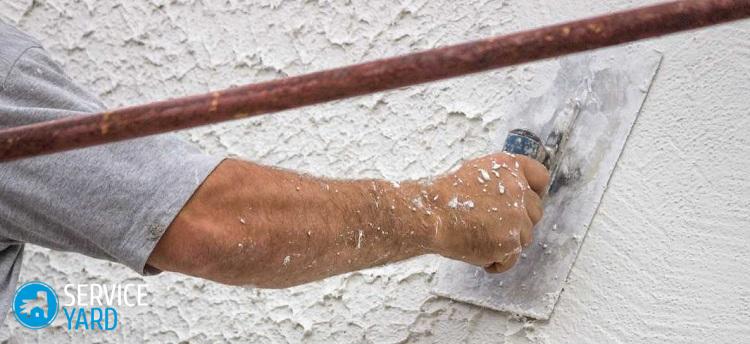Drywall or plaster - which is better?

Building a new house or just repairing an old one leads the owner to reflect on the choice of finish. For many years, the walls were aligned using plaster, but now the situation has changed radically. The construction industry does not stand still, so manufacturers decided to ease the task by releasing drywall. This is a worthy competitor to plaster, but both types of finishes have both significant advantages and disadvantages. It is for this reason that many people sometimes think for a long time about the question: drywall or plaster - which is better? We cannot give you a definite answer, since both options are good in their own way. To choose one or another method of decoration, you should get to know them separately, which we will do today.
to contents ↑Drywall Determination
Which is better - drywall or wall plaster? Let's start the review with drywall, which was invented at the end of the 19th century in the USA. In those days, the material did not receive wide distribution, and only after its appearance in the USSR, it was appreciated.
GKL is a building material consisting of cardboard sheets and an inner layer of hardened gypsum composition. It is widely used as ceiling decoration, for external and internal wall decoration and for interior partitions. It can not be used for facade work and in rooms with high humidity.
Important! Manufacturers produce GKL sheets in three standard sizes with a width of 1200 mm and a length of 2 to 3 meters. The thickness of the paintings can be 9.5 mm or 12.5 mm.
The main types of drywall sheets:
- Standard gypsum plasterboard marked with GKL.
- Waterproof GKL with GKLV marking. Its difference is the presence of special antifungal substances in the gypsum layer.
- Fire-resistant GKL with GKLO marking. In fire-resistant boards, the sheet is reinforced not only with clay, but also with reinforcing fiberglass. Thanks to this structure, the canvases are able to withstand strong fire for an hour without flaring up and not spreading smoke around the room.
to contents ↑Important! The type of drywall can be determined by external staining. So, if the sheet is gray, then this is ordinary GCR, the green designation indicates a waterproof material, but pink indicates a fireproof material.
Drywall instead of plaster - pros and cons
So, we came to consider the strengths and weaknesses of this finishing material. Let's get it together.
Pros:
- Minimum dirt and debris. During the duration of the work you will not find dirty and wet traces on the floor, as this material has a dry structure and does not require moisture.
- Easy to operate and install. Anyone can level the walls of the GCR without special construction and carpentry skills. It will be easy to independently install drywall on the ceiling surface.
- The possibility of waterproofing. Sheathing with such material allows sheathing the walls in order to create a waterproofing system that will save the room from noise from the street.
- The use of fire-resistant material will provide fire protection to the walls.
- The ability to absorb moisture. Thanks to this property, your walls will be able to “breathe”, so fungus does not form under the finish.
- The ability to mask communications.Between the GKL sheets and the wall there will be an empty space in which you can hide the cables and other types of communications, and also it can be filled with insulation.
- Good flexibility. Plasterboard sheets bend well, which allows you to design various walls on the walls and ceilings.
Disadvantages:
- Reduced usable area. GKL needs to be mounted on a special metal crate, which will take most of the room space.
- Performing several finishing work. Wall cladding is just one stage of work, after which you need to putty the joints and apply a fixing finishing material.
- Inability of sheets to withstand heavy loads. A drywall wall cannot hold a large and heavy shelf, bulky interior items, so additional elements are placed under the sheets.
Plaster definition
They began to use plaster for a long time, and this is no accident. Thanks to this mixture, it is possible to produce internal and external decoration of walls, including the ceiling. As a result of the work you will get a hardened surface surface.
Kinds:
- Plain. Used to align the walls and protect them from negative external influences. Unlike drywall, plaster can be applied to both internal and external walls from the front of the room. Conventional plaster can be of three compositions: gypsum, lime and cement-sand mixture.
- Special. This name means the addition of certain components to the mixture that make the coating heat-saving, soundproof, X-ray and waterproof.
- Decorative. It carries an exclusively decorative function. It is applied at the final stage of surface finishing to give the walls or ceiling an attractive appearance. Such plaster is produced in different variations: colored, silk, Venetian, stone and other types.
The difference in materials:
- The lime mortar is a mass of lime and sand, diluted to a ratio of 1: 4. For strength finishes, cement can be added. This mixture is environmentally friendly and is used for outdoor applications.
- Cement-sand mass, prepared in a ratio of 1: 4, can be applied to both external and internal walls. It is with this solution that large surface defects are removed, the layer of plaster will serve without destruction for several decades.
- Gypsum mixture is used for internal work. The resulting coating will have a smooth and white color, which can be processed by any option: to stick the wallpaper, paint or lay the tile.
Advantages and disadvantages of plaster
This long-used finishing method is a competitor to drywall, which has a number of significant advantages. But still, the strengths of using plaster are hard to miss. Let's take a closer look at everything.
Pros:
- Durability. It is considered the most important advantage of plaster. With proper work, in accordance with the instructions for diluting the mortar and technology, it allows you to forget about the uneven wall problem for at least 20 years.
- The ceiling and walls leveled by the plaster method will be durable, extremely reliable, withstand impacts.
- The ability to withstand heavy objects. The surface covered with plaster will easily withstand dimensional furniture, appliances and other items.
- When applying plaster mixture on walls or ceilings, the area of the room will remain the same.
- Possibility of installing single insulation wires on the plastered walls.
Minuses:
- A lot of dirt. In any case, the plaster mixture needs to be diluted with water, so after the work is completed you will have to spend several hours cleaning the room.
- A large period of time for plastering. After applying the material, you will need to wait until it is completely dried and solidified, and after that you can begin to finish. All these processes can take from a week to a month of your free time.
- When performing plastering work by a specialist, the customer will not immediately be able to notice flaws on the surface, so you will have to redo the work. For such a rigorous work, you always need to choose only responsible and experienced craftsmen.
As you can see, it is impossible to align the walls without plaster and drywall. In any case, you need to choose one option that suits you best
to contents ↑Which is better - stucco or drywall on the walls?
Before starting repairs, you need to familiarize yourself with several important factors that help you choose one of two finishing materials:
- If you want to quickly complete the work, then you need to give preference to plasterboard sheets.
- It is better to cover the walls in the kitchen or in the bathroom with cement or cement-lime mortar, which will be an excellent base for tiles and installation of wall structures - mirrors, shelves and a water heater.
- A surface with large irregularities and elevation differences is better to level with plasterboard than plaster. So, when using drywall, the curvature of the walls will not be important, but to seal roughness with a stucco mixture you need to buy a large amount of source material.
- Wall insulation can only be done by installing drywall boards.
- If you want to cover the walls or ceiling with paint, then you should prefer the application of GCR, due to the fact that the coating will not be covered with cracks.
- It is better to plaster the walls of a small room so as not to take away a small area of the room without it.
Stock footage
After everything you have read, you need to make the final decision about which is cheaper - stucco or drywall. Each of these materials has its undeniable advantages, confirmed by many consumers. Make a start, first of all, from your financial capabilities and, of course, from the type of surface being treated.
- How to choose a vacuum cleaner taking into account the characteristics of the house and coatings?
- What to look for when choosing a water delivery
- How to quickly create comfort at home - tips for housewives
- How to choose the perfect TV - useful tips
- What to look for when choosing blinds
- What should be running shoes?
- What useful things can you buy in a hardware store
- Iphone 11 pro max review
- Than iPhone is better than Android smartphones





